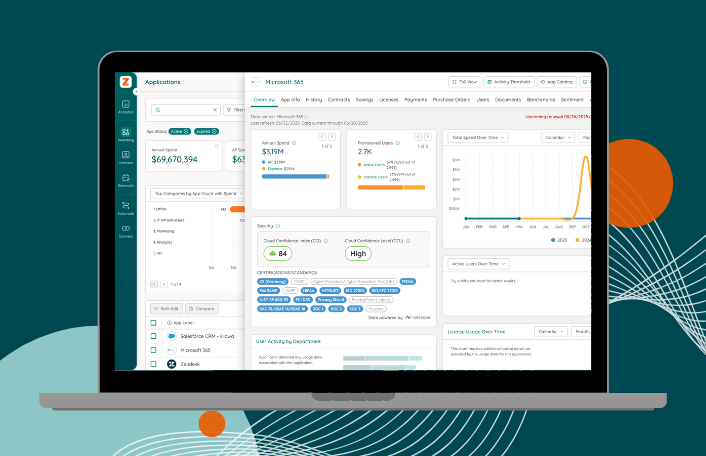
FinOps SaaS Myths Busted: SaaS vs Cloud (and Why It Matters for…
Table of Contents ToggleHow FinOps Teams Commonly Understand SaaS—and What’s MissingSaaS...
Back
Back
Search for Keywords...
Blog

Table of Contents
With the explosion of SaaS and the increase of LoB (line of business) owners buying their own technology, it’s more difficult than ever for IT or Finance to have an effective SaaS renewal process, especially for those teams not leveraging SaaS renewal management software. Because of the lack of visibility, our data shows that enterprises underestimate their SaaS application ownership by nearly 2X.
It’s not an easy feat, and we are more than familiar with the common hurdles to obtaining visibility into enterprise-wide SaaS purchases and renewals. When you put a strategy around SaaS renewal management, you’ll have a material impact on the bottom line because enterprises are spending up to 38% of their entire supplier spend on SaaS and cloud applications.
These are some of the common challenges with software renewal management and best practices to solving them. If you can master these, you’ll be an internal rock star and on your way to leading SaaS optimization strategy conversations with your leadership team and the line of business leaders.

The Ultimate Guide for Wildly Effective SaaS Renewals
Learn MoreWith a living, breathing and accurate system of record for all SaaS and cloud applications across the enterprise, the opportunities are endless. Just think about a world in which you don’t have to waste time chasing the data, but can actually spend time optimizing the SaaS and cloud stacks at your enterprise and advise the business on SaaS cost savings and implementing innovative solutions.
Some of the obvious benefits for IT and Finance are:
Whether you start with Google Drive folders, documents, and sheets, or you have an automated way to track SaaS in your enterprise, you should get started today so that you can define a SaaS renewal management system.
Establishing a way in which you work collaboratively with the business to lead the SaaS and cloud technology conversations will position you well for future success in your career and set your enterprise up for success.
Need a place to get started with your SaaS renewals? Grab a copy of our Renewals Checklist. Or, explore our SaaS Renewal Management Resource Center for more on driving savings and operational efficiency with your renewals.
ABOUT THE AUTHOR

Eric Christopher
Eric Christopher is CEO and Co-Founder of Zylo, the leading SaaS management platform. After 14 years of buying and selling software, Eric knew there had to be a better way to manage cloud applications within a company. Eric started his career in sales at ExactTarget from 2002 to 2010. He spent the next six years in Chicago leading sales teams at Shoutlet and Sprout Social Inc., and founded Zylo in 2016.

Table of Contents ToggleHow FinOps Teams Commonly Understand SaaS—and What’s MissingSaaS...

Table of Contents ToggleWhat Is an E-Commerce Tech Stack?Why Your E-commerce...

Table of Contents ToggleYou’re Not Alone if You Don’t have a...

Table of Contents ToggleYou’re Not Alone if You Don’t have a...
| Cookie | Duration | Description |
|---|---|---|
| cookielawinfo-checkbox-analytics | 11 months | This cookie is set by GDPR Cookie Consent plugin. The cookie is used to store the user consent for the cookies in the category "Analytics". |
| cookielawinfo-checkbox-functional | 11 months | The cookie is set by GDPR cookie consent to record the user consent for the cookies in the category "Functional". |
| cookielawinfo-checkbox-necessary | 11 months | This cookie is set by GDPR Cookie Consent plugin. The cookies is used to store the user consent for the cookies in the category "Necessary". |
| cookielawinfo-checkbox-others | 11 months | This cookie is set by GDPR Cookie Consent plugin. The cookie is used to store the user consent for the cookies in the category "Other. |
| cookielawinfo-checkbox-performance | 11 months | This cookie is set by GDPR Cookie Consent plugin. The cookie is used to store the user consent for the cookies in the category "Performance". |
| viewed_cookie_policy | 11 months | The cookie is set by the GDPR Cookie Consent plugin and is used to store whether or not user has consented to the use of cookies. It does not store any personal data. |
